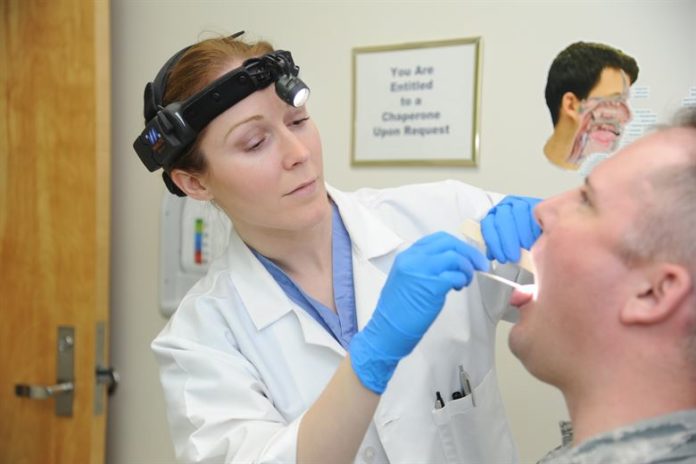When you’re looking for a new job, the salary is always going to be right up there, if not at the top of your list, in terms of making a decision to put in an application. Today’s job market is what might be called a buyer’s market for applicants: the chances of landing that dream job and the salary to go with it are high. However, many experts believe there is a recession on the way, and so it might be a good idea to move quickly. To help you out, we’ve found the jobs and firms that can provide the best salaries in the US this year.
25. Compensation and Benefits Managers – $132,860

Compensation managers are responsible for the planning, direction, and coordination of the wages a company pays its workers, and the way in which they are paid. Benefits managers are responsible for the same thing but in regard to the benefits offered to workers by a company, e.g. dental plans, retirement plans, health insurance, etc. They have the responsibility of monitoring trends in the market and government regulations to make sure that the company’s programs are competitive, up-to-date, and compliant with the law.
24. Natural Sciences Managers – $139,690

These professionals have oversight of the scientists working for an organization, whether they be biologists, physicists, or chemists. They will manage research and development activities and be responsible for the coordination of production, quality controls, and product testing. They will also liaise with senior managers, marketing, production and finance departments, and external organizations that supply materials as well as equipment.
23. Sales Managers – $140,320

Sales managers are essential for all companies that make and sell products or services, i.e. pretty much all of them. Sales managers run sales teams, create revenue targets (as well as make sure that they are met) and help customers to get exactly what they want. The role of the sales manager can differ greatly from firm to firm, but there’s no doubt they are an essential part of any business.
22. Attorneys – $144,230

Crime shows no signs of disappearing, and neither do attorneys. Justice is at the foundation of American society, and this is reflected in the amounts and by attorneys. It’s predicted that the legal profession will grow by about 8% by 2026, which is the normal growth for any profession.
21. Financial Managers – $146,830

As the name implies, financial managers look after an organization’s financial matters. They are responsible for financial reporting, investments, and planning for a company’s or organization’s long-term financial targets. Although there are many computerized alternatives now available to help us manage finances, the human touch will still be needed, which is reflected in the fact that the number of financial managers is predicted to expand by 19% by 2026.
20. Marketing Managers – $147,240

Marketing today is more important for business than ever, so you’d expect to find marketing managers in the list of high earners. However, different industries pay very different rates for this profession. Still, the median income for the profession is around $150,000, which isn’t that bad.
19. Podiatrists – $148,220

Podiatrists (sometimes called chiropodists) are responsible for the diagnosis and treatment of diseases and injuries to the lower leg, ankle, and foot. They are qualified physicians who deal with a number of major and serious medical issues. Looking at other people’s feet for a living isn’t everybody’s idea of fun, but it’s well-paid and the profession is expected to expand in the future.
18. Architecture/Engineer Managers – $148,970

These professionals use their expertise in engineering or architecture in a variety of different projects. They can be responsible for the direction and coordination of construction sites, maintaining buildings, checking safety, running buildings, overseeing quality procedures and more.
17. Information Systems Managers- $152,860

Information Systems (IS) managers are responsible for the implementation of IT in organizations, generally running a department of IT specialists. IS managers are responsible for planning, installing and maintaining information systems, as well as supervising upgrades to hardware and software.
16. Petroleum Engineers – $156,370

Petroleum engineers supervise all aspects of finding and exploiting gas and oil deposits. They search for deposits in likely areas, and once they have found some, they help to design and implement the means of extracting said resources. They also monitor wells and even make sure everything is left safe when a project is finished. It is predicted that the US will need 15% more of this type of worker by 2026, so it could be a good career choice. Just remember that it depends on whether demands for gas and oil (and their prices) keep rising.
15. Pilot/Navigators – $169,560

We all know that planes need pilots and copilots, otherwise those planes would never get anywhere. You might not realize that most commercial flights also have navigators, who monitor the weather and keep the plane on course and away from collisions with other planes. Pilots and navigators generally have bachelor’s degrees but it is not always compulsory. To become a commercial pilot, you need to log at least 250 flying hours.
14. Nurse Anesthetists – $174,790

Doctors and surgeons all rely on nurse anesthetists, who can work in dental practices, hospitals, surgical centers, private offices and elsewhere. Physicians and anesthesiologists depend on them for all aspects of care related to anesthesia both before and after a huge number of procedures. These nurses undertake detailed evaluations of patients, preparing them for their procedures and managing their pain relief afterward.
13. Dentists – $175,840

Anyone who’s ever had to pay for a visit to the dentist won’t be surprised to find that dentists are right up there in the high earner bracket. As long as people have teeth, there will always be a demand for dentists, and the BLS predicts that the profession will expand by 19% over the next 10 years.
12. General Pediatricians – $183,240

Pediatricians manage every aspect of child health, including physical illness, behavioral issues and mental health. They are trained in the diagnosis and treatment of all diseases that can affect a child, from teething problems to childhood cancer. Pediatricians on average earn less than general practitioners and internists, but the average wage of $183,240 still makes them some of the best-paid professionals in the country.
11. Prosthodontists – $191,400

A prosthodontist is a type of dental surgeon who specializes in the creation of prostheses for the mouth that can replace missing teeth and straighten out deformed mouth or jaws. They worked to help people to chew and speak normally, and to make their teeth look better. This is a very specialized area, with the American Dental Association reporting only 3500 prosthodontists/prosthodontic residents working in the United States, with the Bureau of Labor Statistics setting the number even lower at around 1000.
10. General Internists – $196,490

Internists (internal medicine physicians) use their specialist clinical knowledge and expertise to diagnose, treat, and care for adults for a wide variety of health problems. They train particularly to help diagnose complex cases, to care for patients with chronic illness, and to monitor patients who have multiple diseases. They are also experts in preventing diseases and promoting good health.
9. Chief Executives (CEOs) – $200,140

CEOs (Chief Executive Officers) are a company’s highest-ranked executive, with responsibility for acting as a firm’s public face, facilitating communication between the Board of Directors and the rest of the company, making important decisions for the company, and general company management. CEOs are appointed by the Board of Directors and a company’s shareholders. It’s quite surprising to find that the states paying most for CEOs are South Dakota, followed by the District of Columbia, and Rhode Island. California and New York don’t make the list.
8. Physicians – $203,880

The term “physician” is quite a wide one, encompassing both surgeons and general doctors. It is expected that there will be a 30% growth in the number of physicians between 2016 and 2026, as the population expands and grows older and requires more healthcare. This expansion might explain why the average salary dropped by 5% recently, as new entrants to the profession will generally be making the lowest wages.
7. Family and General Practice Physicians – $211,790

This type of physician is responsible for diagnosing and treating common diseases from which many people suffer; they also have responsibility for offering health advice for diseases and ill-health prevention. If patients need a more specific diagnosis or treatment, a physician may refer them to specialists.
6. Psychiatrists – $220,380

Psychiatrists are qualified doctors (unlike psychologists, who are not). The specialty of psychiatrists is the diagnosis and treatment of mental illness. One of their key techniques is delving into the past of a patient through individual or group therapy, finding the root causes of problems and helping patients develop ways to cope with them. Psychiatrists need their board’s certification to work.
5. Orthodontists – $225,760

Orthodontists are specialists in advanced dentistry, treating anomalies in oral cavities and dental malocclusion. Their work chiefly consists of fitting orthodontic braces and retainers to realign (straighten) jaws and teeth. Orthodontists work a wide range of hours depending on their practice and how hard they want to work, but average hours are between 30 and 40 per week.
4. Obstetricians/gynecologists – $238,320

Obstetricians and gynecologists (OB/GYN) are doctors that specialize in women’s reproductive health and in the birth of children. Their wages are slightly lower than oral/maxillofacial surgeons. The highest average salaries for OB/GYNs are found in Colorado, Idaho, Kansas, South Dakota, and Wisconsin.
3. Oral Maxillofacial Surgeons – $242,370

Oral maxillofacial surgeons have the same training as oral surgeons, but they then go on to further training so that they are competent to deal with complicated dental and/or medical problems. Patients are frequently referred to oral maxillofacial surgeons by dentists or oral surgeons if severe trauma to the face or teeth has occurred. Pay for both oral surgeons and oral maxillofacial surgeons working in hospitals tends to be much lower than in the private sector.
2. Surgeons – $267,020

A surgeon is a type of physician who treats illnesses, injuries or deformity by manipulating them manually, using machines or instruments. Surgery can be non-invasive, minimally invasive, or invasive. It’s interesting to note that the first surgeon we know of was in the sixth century BC in India, and he was a plastic surgeon.
1. Anesthesiologist – $267,020

Anesthesiologists are responsible for administering anesthesia. They also make sure that patients are safe during surgery by monitoring vital signs. Anesthesiologists are vital in managing pain and emotional distress for patients. To become an anesthesiologist, you need to finish college, attend medical school (four years), take an internship (one year) and an anesthesia residency (three years). In addition, you may take an extra year of training in the form of a fellowship.


































